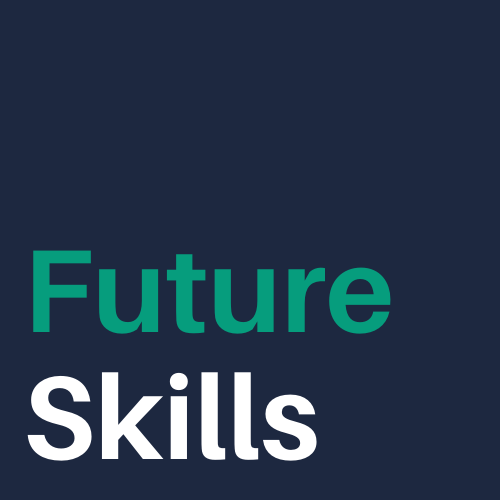Seriously. How you doing career services? Hanging in there?
I ask because things are looking a bit rough. I just read a summary from NACE’s 2018 Student Survey on the resources students use most in the full time job search. The numbers are bleak.

Source: NACE, The Job Search Resources Students Use, Find Most Useful

Yiiiiiikes. Only 26.2% of students who used career fairs found them helpful, 9% for virtual career fairs. Career services puts in a ton of work for these events and students are like,

Only 20% of students surveyed found employer presentations useful. Same for having employer reps on campus. Both resources takes a tremendous amount of coordination and logistics in career services.

Alumni relations touts the benefits of connecting current students with alumni but alumni-as-a-job-search-resource didn’t do much better. Only 15% of students who tapped alumni found them useful.

But the worst bit is that 50.3% of students considered company websites useful in the job search while only 21.6% considered the career center useful.
Ouch.

If students find company websites more helpful than the entirety of resources and people within career services, then what is the goal of career centers?
With this kind of data it’s pretty clear career centers need to change things up. And that probably feels like an overwhelming task right now.
I know you guys work your faces off. You’re underfunded and understaffed. After being the department that was ignored for years, all eyes are on your department because now you’re suddenly responsible for all the outcomes. As a former university MBA career coach I worked in a system that valued outcomes above all else. In MBA land, outcomes = rankings and rankings > everything else. Tying your work to student outcomes with metrics defined by outsiders doesn’t make change any easier. In fact, it makes it harder.
But just because it’s hard doesn’t mean you can’t, and shouldn’t, change it up. Those numbers don’t lie. Students don’t find value in what you’re offering.
I’ve had plenty of positive, passionate conversations with many of you who are bursting with ideas to change the status quo in university career centers. I know that many of you feel limited in your ability to make change happen.
So here’s my advice to you, the career services professional who has refreshing, bold, impactful, fabulously bad ass ideas that will transform career services for the better: make it happen in 2019.
Wait, wait. Let me rephrase.
Here’s what I want you to do:
Go rogue, break the all the damn rules.

Here’s how to do that:
- Ask for forgiveness not permission.
- Don’t wait for leadership to change things. Change begins with you.
- Apply for leadership roles even if you’re not qualified. Push through personal doubt.
- Pitch radical presentations and workshops for every single university career services conference. If they don’t accept yours host a webinar at your school or for your personal network instead.
- Actually, host a webinar on the subject anyways. You’ll learn valuable marketing and public speaking skills in the process.
- Join the conference committee for your regional or national career center conference. Vote for radical presentations from underrepresented voices.
- Listen to and lift up underrepresented voices in the industry. Change and new ideas come from diversity of perspectives and experience.
- Apply for board openings at national university career organizations. Challenge outdated ideas.
- Experiment with new workshops and coaching methods (even if its your first year on the job).
- Host a design thinking workshop to get better ideas into your department. Then execute on them.
- Question the status quo. Ask why. Keep asking why.
- Find your power squad. Find the people who ask why, who challenge the status quo. Get inspired. Then build something together.
- After you build it, reflect. What worked? What will you do differently next time?
- Strive for impact not outcomes.
- Measure your impact. Then promote the shit out of your success. Don’t expect others to notice.
- Make a list of every.single.resource and workshop your department offers. Then ask why. “Why career fairs? Why resume reviews?”
- Then ask how. “How might we do this instead?”
- Every time your department or leadership claims they are innovating, ask how. Then ask what makes those initiatives innovative.
- Get students involved. Ask them what they need.
- Better yet, give them a budget and support to create a program they need so they get experience creating and collaborating.
- Stop looking for ideas at elite schools and in departments with all the money. Instead, look at all kinds of institutions for new ideas (especially community colleges)
- Get to know recent alumni (ignore alumni relations – reach out on LinkedIn personally). Interview them. Translate alumni insights and experiences into new initiatives.
- Learn about new hiring algorithms and how they’re making old school career advice obsolete.
- Upskill regularly.
- Take an online course in change management to learn how to influence change.
- Commit to chaos in 2019.
Disrupt is an overused phrase. But career services needs to change and change fast. If students get more value out of a company website than they do your center, things are really not ok in career services.
So to my fellow career coaches who are nodding their heads along to this article, bursting with ideas: go forth and create chaos. Wreck the status quo. Challenge your leadership. Become the new leadership.
Commit to chaos in 2019.





